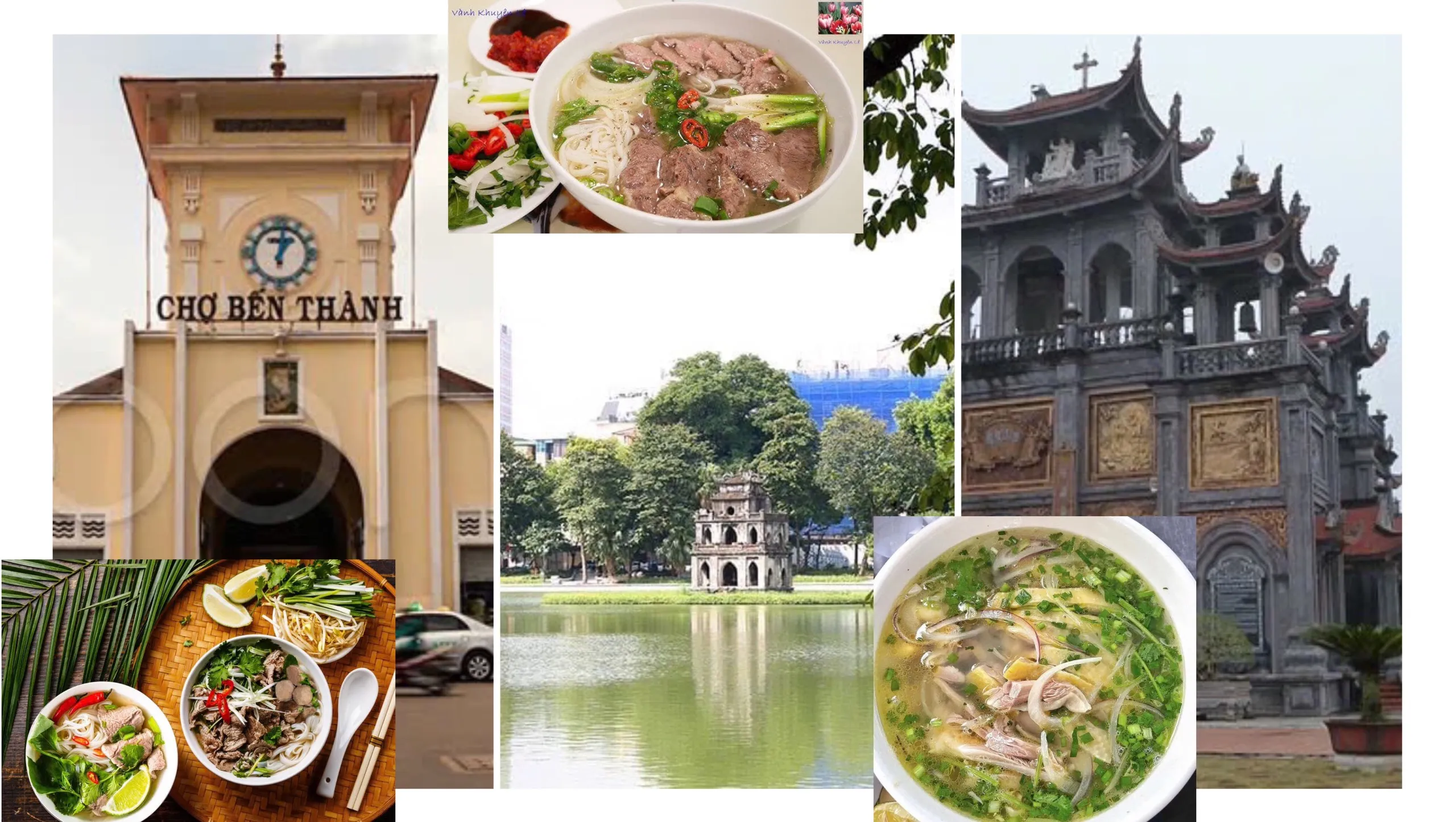
Although there are many theories about the origin of pho, the exact origin of this typical dish is still unknown. Pho, a traditional specialty of Vietnam, is believed to have originated in Nam Dinh. This dish is not only the pride of Vietnamese cuisine but also a unique symbol of the country’s culinary culture.
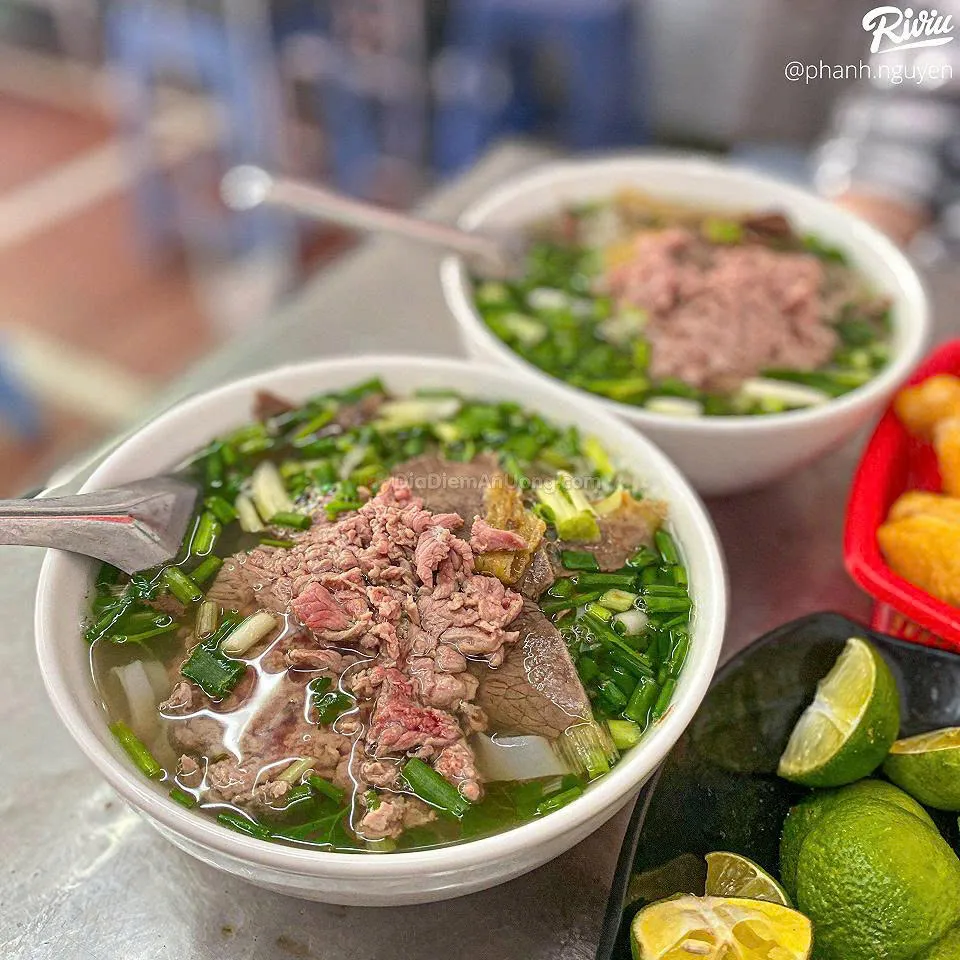
Writer and researcher Nguyen Ngoc Tien – who has spent a lot of time and effort researching Hanoi pho – said that pho appeared around the end of the 19th century, and it is difficult to determine the exact year.
Pho has gone through an interesting development journey, from a simple dish for workers on the river wharf to a sophisticated specialty of Hanoi people, thanks to the creativity and needs of the middle class. The transformation of pho not only reflects the richness of rural cuisine but also demonstrates the sophistication of Hanoi cuisine through the ages.
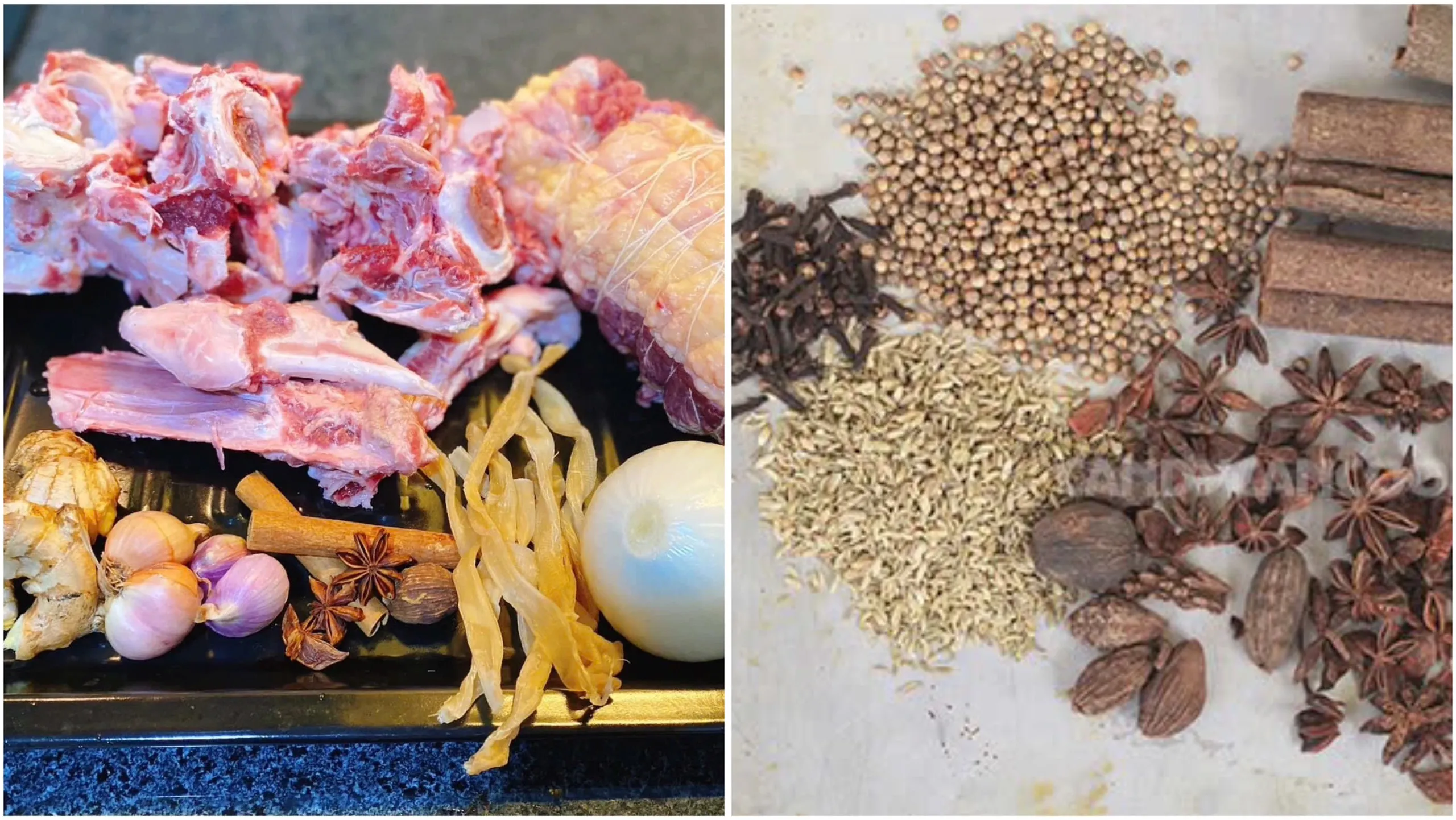
Ingredients for cooking Pho (today).
Originally, pho had only one type, beef pho, with cuts of meat such as well-done, shank, flank, and brisket. Rare pho was added later. According to writer Nguyen Ngoc Tien, during the resistance war against the French from 1947-1954, Hanoians had to evacuate and brought the pho profession with them. However, due to difficult and scarce conditions, the thorough bone-simmering was no longer feasible, and beef was prioritized for plowing. Therefore, chicken pho was born as an alternative, with many variations such as whole chicken, skinless chicken, boneless chicken slices, thighs, pho phao cau, and wing tips.
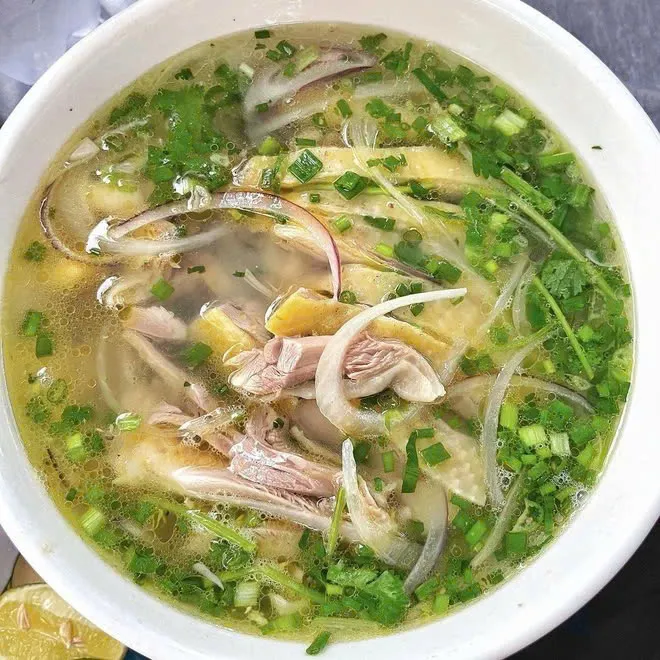
Chicken Pho
Over time and with the development of society, the needs and tastes of diners have changed, leading to the expansion of pho types. Today, pho is divided into two main types: pho in broth and pho kho. Pho in broth includes pho bo, pho ga, and pho sou vang, while pho kho has variations such as pho xao, pho chien phien, pho ran, and pho cuon. Dry pho, although still retaining the flavor of beef and green onions like pho in water, has its own variations such as pho cuon with whole rice noodles rolled with meat, vegetables, and dipped in sweet and sour fish sauce, or stir-fried pho with sauce made from stir-fried beef.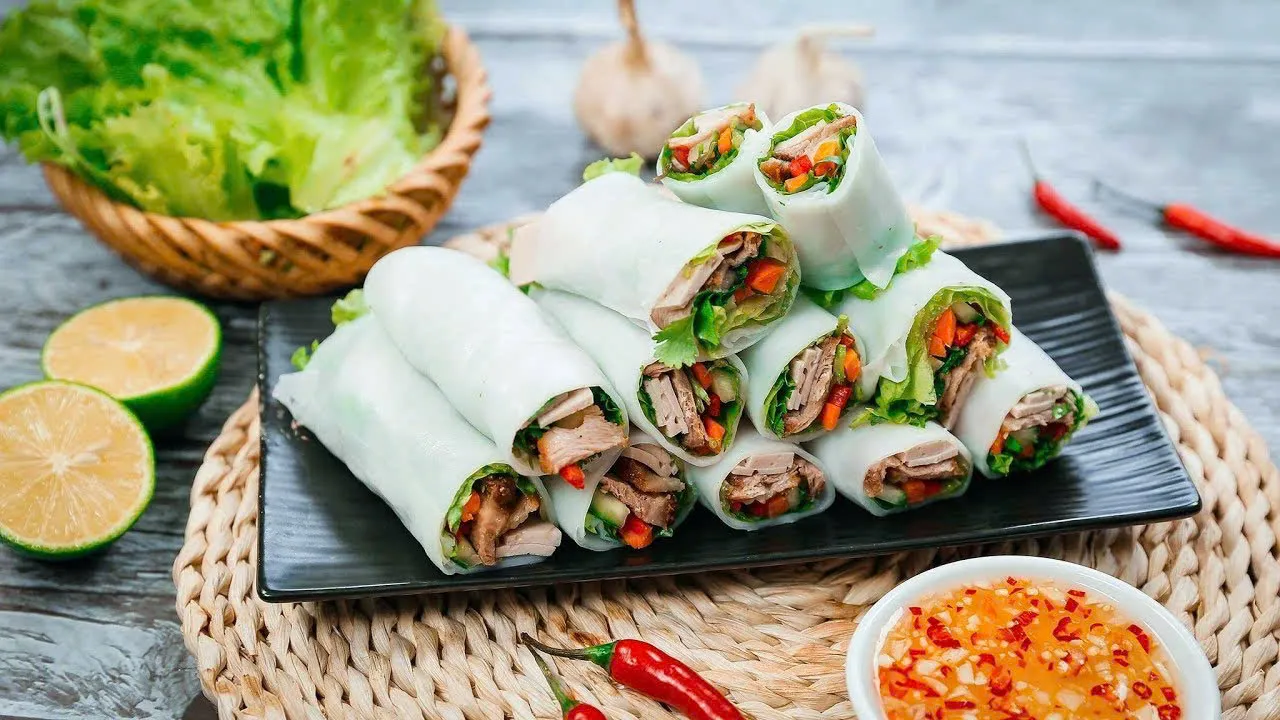
Pho Rolls – usually rolled with beef or grilled meat and vegetables served with sweet and sour fish sauce.
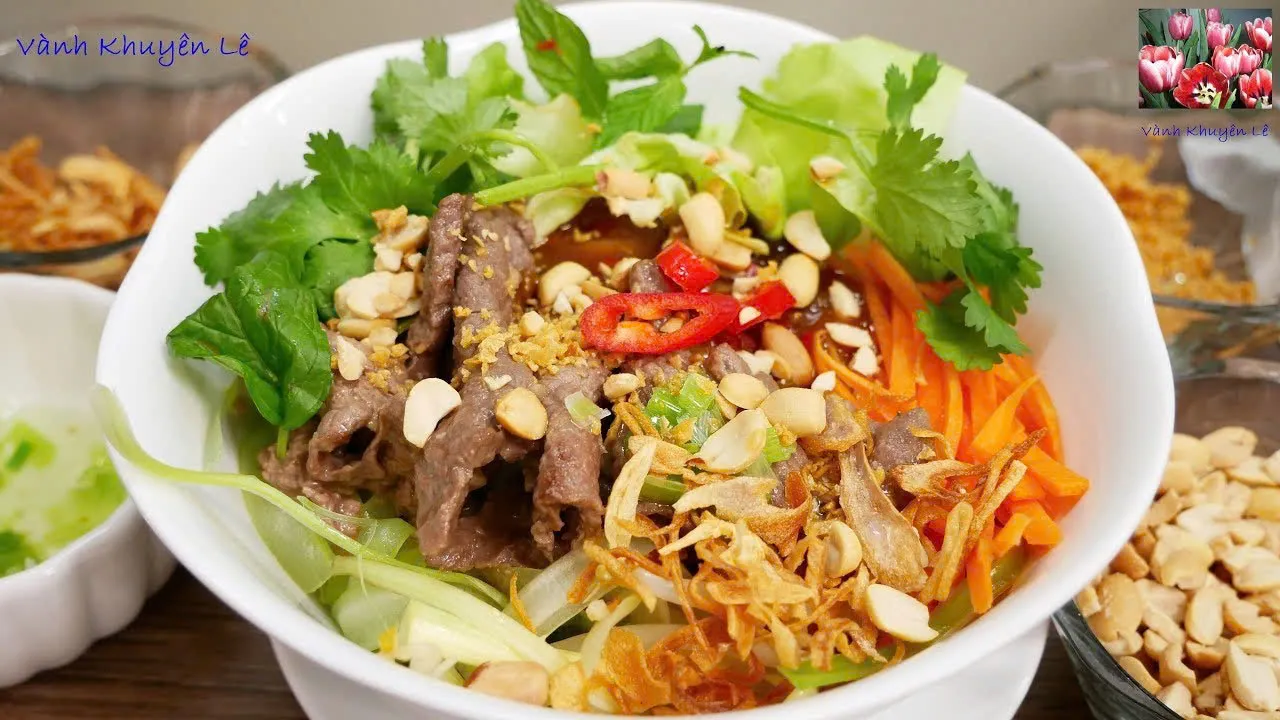
Dry Pho.
Pho has adapted and transformed to suit the culinary culture of each region. Currently, the two most prominent versions are Pho Bac, also known as Pho Ha Noi, and Pho Nam, or Pho Sai Gon. Each type of pho has a strong local imprint and distinct flavor, reflecting the rich diversity of Vietnamese cuisine.
Northern Pho – (Pho Ha Noi)
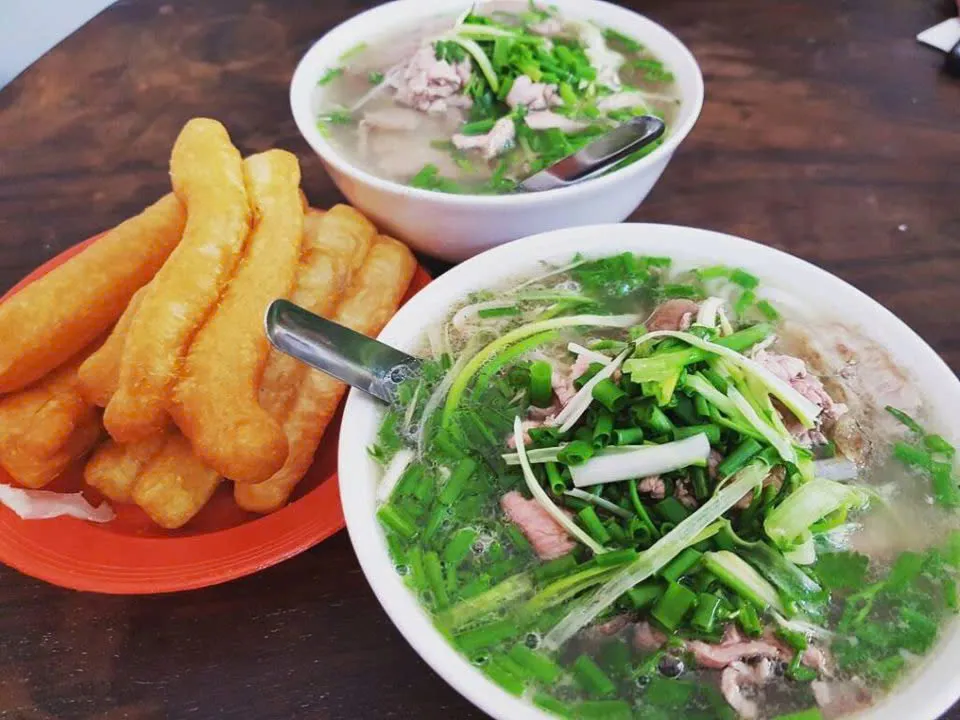 Northern pho has a sweet broth made from bones and is often served with fried breadsticks.
Northern pho has a sweet broth made from bones and is often served with fried breadsticks.
The broth of pho is made from beef bone broth, the broth is clear, sweet, aromatic with the flavor of herbs. The meat used for pho can be beef or chicken. Pho noodles must be thin and soft, the spices of pho are green onions, pepper, chili vinegar, sliced lemon. People often have the habit of adding more MSG (monosodium glutamate) to the broth.
Southern Pho – (Saigon Pho)
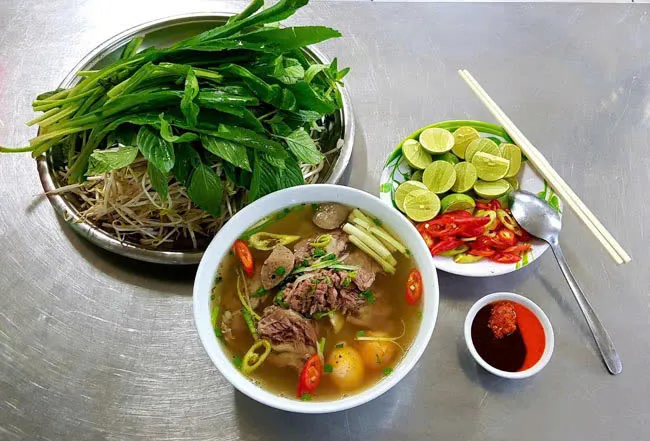
Southern Pho served with herbs, bean sprouts, black bean sauce and chili sauce.
A bowl of southern pho tends to have a sweet taste of sugar, served with more vegetables such as bean sprouts, basil, coriander, thinly sliced onions, along with beef balls, black bean sauce, red bean sauce (sweet chili sauce). Many Vietnamese pho restaurants abroad also have a taste similar to southern pho. The beef in pho is usually sold in 5 ways: well done, rare, flank, brisket, tendon, in addition to a bowl of fat water (beef bone fat) left separately if the customer wants. The broth is usually not added MSG (monosodium glutamate)
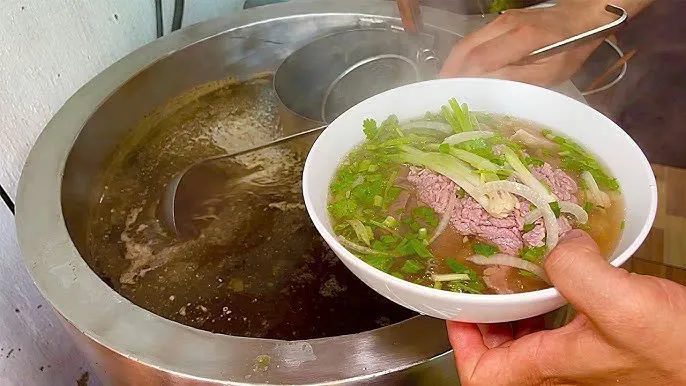
Pho broth must be clear, naturally sweet, and aromatic from herbs and spices.

Topping in a bowl of Pho.
Day of Pho
In 2016, the Japanese chose April 4th of each year as Vietnamese Pho Day in Japan. April 4 was chosen because the number 4 (four) in English and the word “pho” are both pronounced in Japanese as フォー (fō) to help people remember easily.
In Vietnam, on December 12, 2017, Tuoi Tre newspaper coordinated with Acecook Vietnam Company to organize the first Pho Day. This will be an annual traditional activity. Since 2018, “Pho Day” will be organized as a community tourism and cultural activity. (source: wikipedia)
Previously, in September 2007, pho was officially recorded in the Shorter Oxford English Dictionary, published on September 20 in the UK and the US. Pho officially became a proper noun in the prestigious English dictionary in the world, and also contributed to shaping Vietnamese cuisine on the world culinary map.
Since 2011, along with spring rolls, Vietnamese pho has been listed by CNN (USA) as one of the 50 most delicious dishes in the world. On August 23, 2022, Vietnamese bread, pho, and coffee were listed in the top 50 best street foods in Asia by CNN.
Recently, Sunisa Lee, an Asian-American gymnast, shared her love for Vietnamese pho. After the 2024 Olympics, Lee expressed her longing for pho and admitted that she was craving this dish. “I really want to eat pho or some kind of soup, but I really don’t know where to find it,” Lee shared. She said that pho is an important part of her Asian identity.
Thanks to the movement of Hanoians and the overseas Vietnamese community, pho has gone beyond national borders and become a global brand with a strong Vietnamese imprint. Wherever there is a Vietnamese presence, you can find Pho. Pho restaurants have appeared in cities large and small all over the world, maintaining the characteristics of Vietnamese pho, although each place has its own conditions and differences in ingredients.
Vietnamese pho abroad also has pho shops serving customers with different tastes, with Hanoi-style pho and southern-style pho. In France, pho shops are concentrated in the 13th district of Paris (France), with pho Pho Co with Hanoi’s standard flavor and Ba Mien, Com… shops with southern flavors. Pho is also present in many states in the US. In Baton Rouge (Louisiana), there is a small Vietnamese pho shop that has been around for a long time, often using dried vermicelli noodles to make pho, and the beef, according to the owner, is usually fresh beef bought at the early morning market of Mexican people to have a taste similar to Vietnamese beef, soft and fragrant meat. In cold seasons, herbs and onions often have to be imported from states with warmer climates, because Vietnamese tropical herbs often cannot withstand the cold here.
In Imizu, Toyama, Japan, Thang Long Restaurant of Mr. Co Nhu Thanh is an address that attracts Japanese people who love Vietnamese pho, in addition to Vietnamese people who miss the taste of their homeland. In Sapa market (Czech Republic), there is a famous pho restaurant, attracting diners not only in the area but also from surrounding countries.
Pho is not only a Vietnamese dish for meals during the day, when missing a meal, or simply when craving something hot and with water. It is also a memorial dish for Vietnamese people living abroad. In addition, Pho is also a dish loved by many people around the world.






